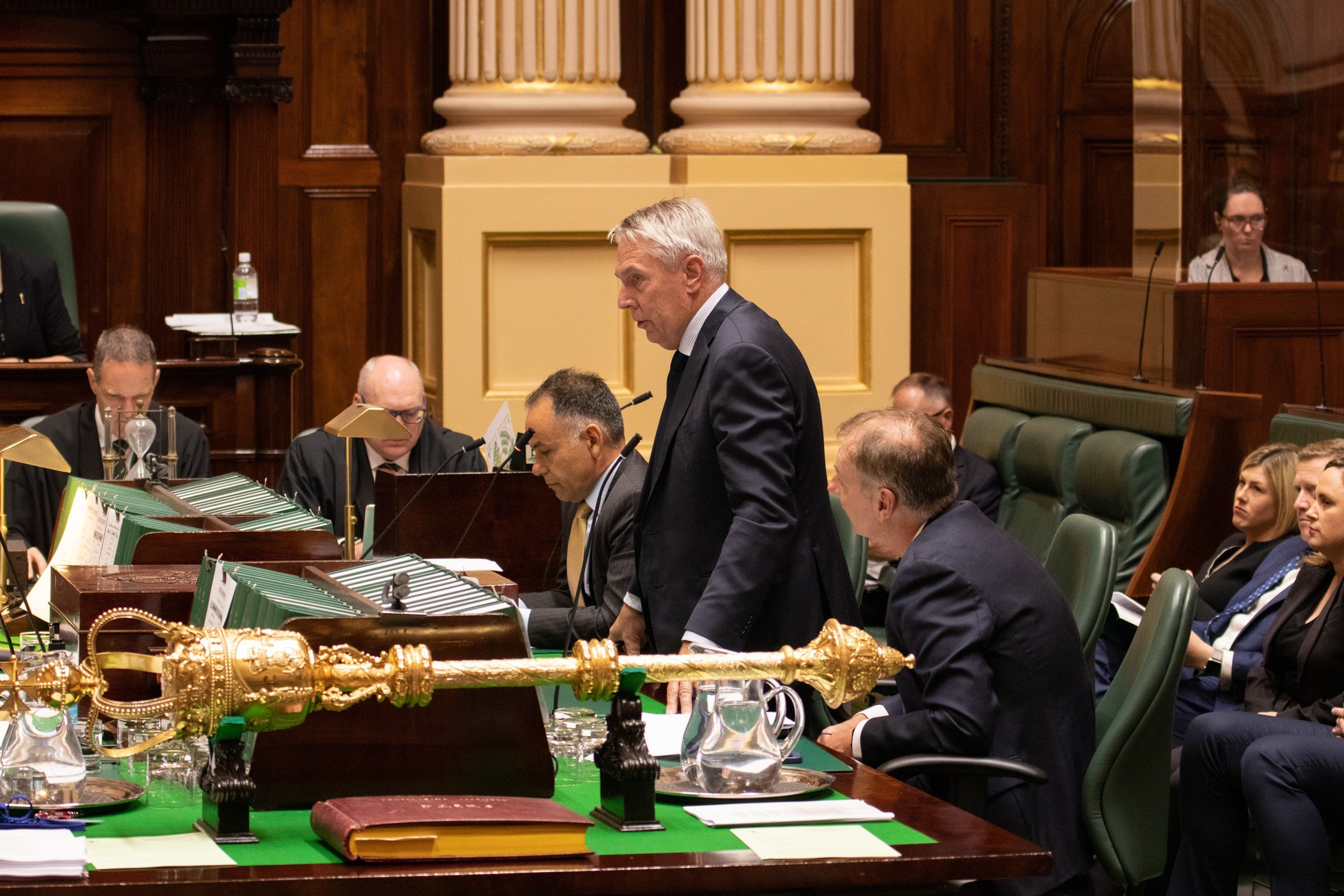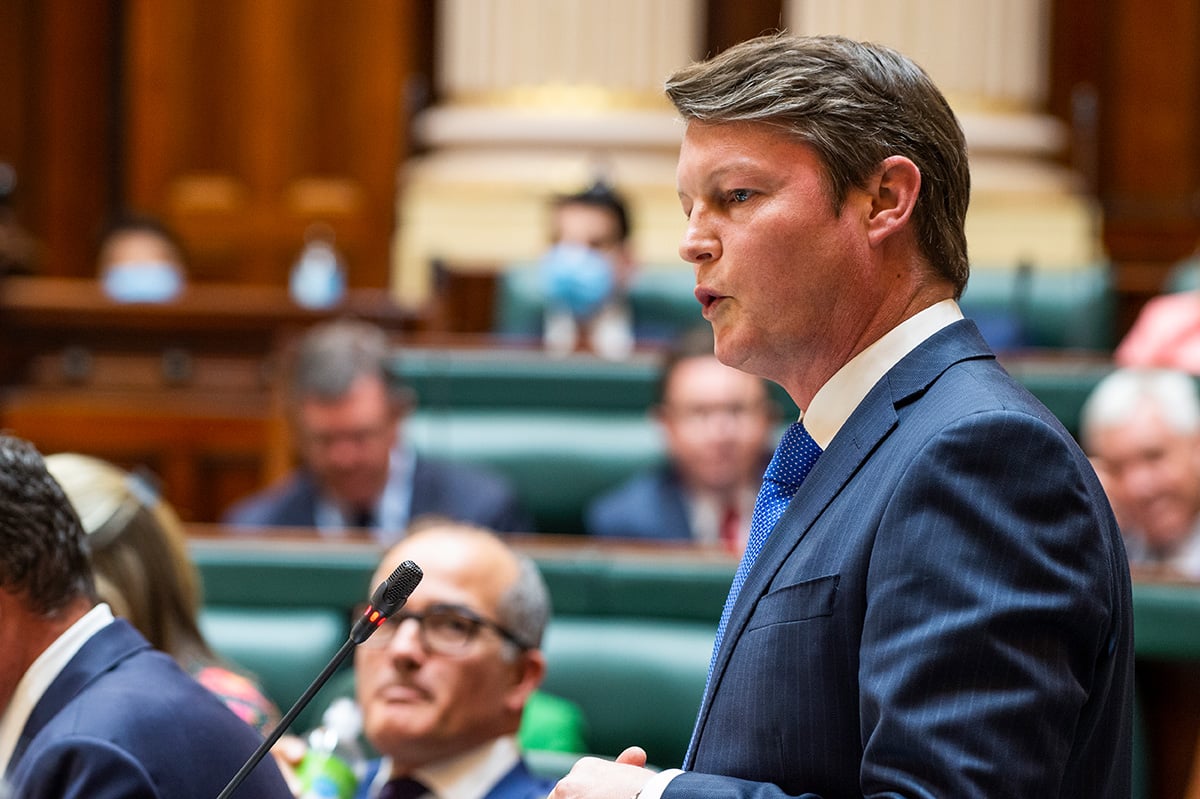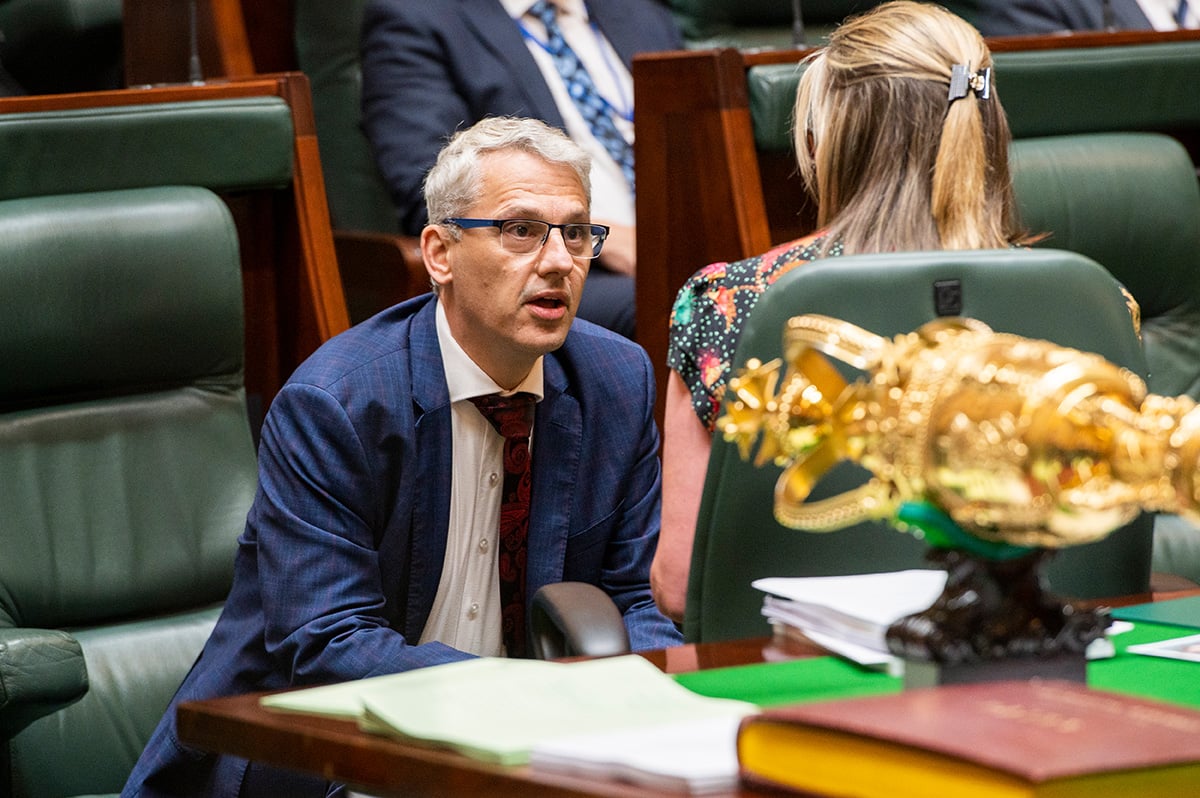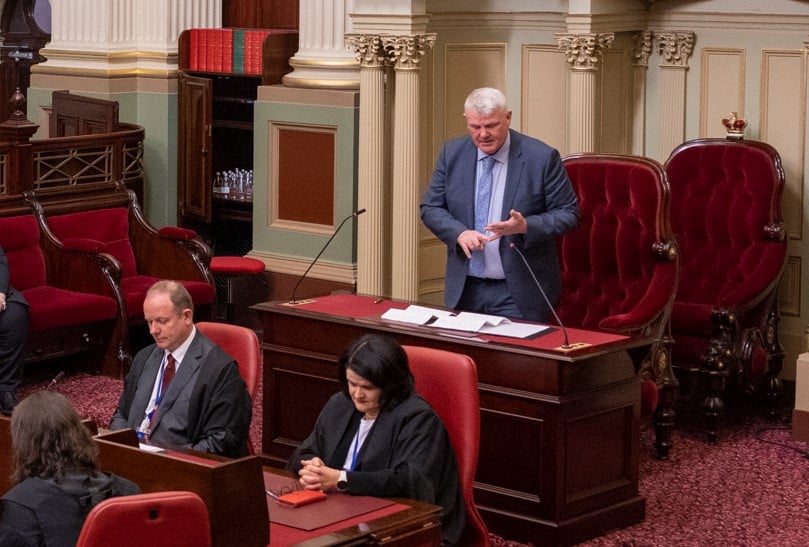How sitting days work
On a sitting day, members meet at Parliament House. The schedule is always busy, filled with debates, decision-making and question time.

Question time
Question time allows members to ask ministers questions about the government’s decisions and actions. Question time takes place every sitting day in both the Legislative Assembly and the Legislative Council.
Question time has three parts: questions without notice, ministers' statements, and constituency questions.

Question time highlights current issues and examines ministers’ actions. By asking questions, the Parliament keeps the government accountable for its decisions.
Question time is also the main part of a sitting day where all members are present in the Chamber.
Question time usually begins at the times below.
- Legislative Assembly: Tuesday, Wednesday and Thursday at 2.00 pm
- Legislative Council: Tuesday, Wednesday and Thursday (and Friday, if the house sits): 12.00 noon
These times may change.
Members can ask ministers questions about their actions and decisions. These are called questions without notice because ministers have not seen the questions beforehand. Ministers have up to three minutes to answer each question.
One supplementary (follow-up) question can be asked after each question. Ministers have up to one minute to answer each supplementary question.
Ministers may make a statement on the government’s work and achievements. A minister’s statement can be up to two minutes long.
Members ask a question about their own electorates. Government and non-government members can ask constituency questions.
Ministers must provide a written answer to any constituency questions asked in the Assembly within 30 days and in the Council within 14 days. This gives the minister and the government department time to research the issue.
Constituency questions and their answers are published online. Click the link below to search the questions and responses database.
The Speaker or President decides which members can ask questions based on the proportion of members from each party. Parties with smaller representation and independent members might not have the opportunity to ask a question every question time.
Under the current sessional orders, government members cannot ask questions without notice. Such questions had been criticised in the past because ministers often knew about the question in advance and gave prepared answers. These type of questions are known as ‘Dorothy Dixers’. They are named after an American advice columnist who often wrote the questions she answered.
Ministers’ statements allow government members to speak about their current activities without using Dorothy Dixer questions.
Debates
Parliament is a place for debate, where different opinions and ideas can be heard. There are several types of debate, each with a different purpose.

Most of a sitting week is spent on government business, debating matters that government members have introduced to Parliament. This can include:
- bills
- motions (proposals made by members), for example to set up a new parliamentary committee inquiry.
Formal business covers the administrative issues that the houses deal with. It includes:
- introduction of bills
- notices of motion
- tabling of petitions, committee reports and other documents required by law
- messages from the Governor and the other house
- motions by leave.
Members can make statements on any topic of concern to them. Members often use this time to speak about people or organisations in their electorate.
General business is matters that non-government members have introduced to Parliament.
In the Council, the Wednesday of a sitting week is mostly spent on general business. This can include:
- private member’s bills
- motions (proposals made by non-government members), for example to set up a new parliamentary committee inquiry or requiring documents to be produced by the government.
General business is rarely debated in the Assembly.
This is a discussion on a topic believed to be in the public interest. Government and non-government members take turns proposing a topic to discuss.
Members do not vote on matters of public importance as no decision needs to be made.
Members use the grievance debate to raise concerns. Eight members have the chance to speak.
In the Assembly, members make statements about any parliamentary committee report tabled in the current parliament. This excludes some reports of the Scrutiny of Acts and Regulations Committee.
In the Council, members may speak on any report, paper or petition tabled in the current Parliament.
At a scheduled time in the evening, the Chair (the Speaker or the President) stops debate. Unless the members decide to continue the sitting, the adjournment debate begins.
At the end of the adjournment debate, the bells in Parliament House ring to signal that the sitting day has finished.
The adjournment debate gives members a chance to raise an issue with ministers. Ministers can respond immediately in the chamber, or provide a written response within 30 days. The written response is then published online.
Click the link below to search the questions and responses database.
Making decisions
Decisions in Parliament are made by voting. This can happen in two ways—on the voices or with a division.

The Chair (the Speaker or the President) states the question, for example, ‘that the bill be now read a second time’. Members respond by saying 'aye' or 'no'. The Chair declares whether the majority voted for the 'ayes' or for the 'noes'.
Immediately following a vote on the voices, any member can ask for a division, which is a formally counted. They may do this because:
- they disagree with the result of a vote on the voices
- they want their opposition to a bill or motion to be officially recorded.
When a division is called, bells ring throughout Parliament House to let members know they are required in the chamber to vote. Members usually have four minutes to enter the chamber and participate in the vote.
The names of the voting members are published in Hansard.
In the Assembly, the Speaker (who is not allowed to vote in a division) has a casting vote. The Speaker traditionally follows the practice of the United Kingdom’s House of Commons, which is that if the vote is the final vote on a bill’s passage, the Speaker votes against the bill because only a majority of members should be able to change the law.
In the Council, the President can vote with the rest of the members. In the case of a tie, the vote fails because a majority of members have not voted to support it.
Members generally vote with their political party. When a party decides that its members do not have to vote with their party, this is called a conscience or personal vote.
For issues that deal with personal ethics, the parties may give members a personal vote (also known as a conscience vote). For example, all members were given a personal vote when debating the Voluntary Assisted Dying Bill 2017.
Rules and traditions
There are many rules and traditions that affect how the chambers operate. The Speaker and the President enforce these rules and traditions in the chambers.

- The Victorian Constitution
- Standing and sessional orders
- Past rulings from Speakers and Presidents
- Customs from the Westminster tradition of parliaments
- Members of Parliament (Standards) Act 1978
The Chair (the Speaker or the President) enforces the rules in the chamber. Any member may raise a ‘point of order’ when they believe a rule has been broken.
The Chair has three options when a member breaks a rule:
- Give a warning to a member.
- Order a member to leave the chamber. The member may return for divisions (votes).
- ‘Name’ a member, to suspend the member from the chamber for a day or longer. The member may not return for divisions (votes).
‘Naming’ a member only happens when there is a serious breach. This is when a member ignores the Chair repeatedly and on purpose or stops debates from happening smoothly.
Banned disorderly conduct includes:
- offensive language
- making phone calls in the chamber
- using props during speeches
- booing, chanting or singing
- applauding, unless permission is given by the Chair.
While a member is speaking, other members sometimes call out their support or disagreement. This is known as an interjection.
The Chair will allow some interjections. However, if the interjections are too loud or disruptive, the Chair may decide that they are disorderly and ask the member to stop.
'Hear, hear' is a traditional interjection used to support a member’s speech.